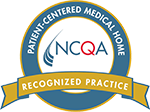Six Pediatrician Recommended Tips for Treating Sunburned Skin
Summer is in full swing with warm weather and sunshine that beckons us to go outside and play. Even the most diligent sunscreen-applying parents will face treating a sunburn at some point or another. It can be downright frustrating, painful, and disheartening to discover a sunburn along the bathing suit lines or in that little patch of skin between your child’s tankini!
Six tips to help make your child’s sunburn less painful
- Stop the inflammation. A sunburn is an inflammatory reaction of the skin. Ibuprofen can help by blocking this reaction, reducing swelling, pain and even redness. To be most effective it should be administered as soon as you notice the sunburn. You can give it up to three times per day for two days. Follow the dosing instructions on the package for your child’s age and weight.
- Hydrate. The recommended daily intake of water should be 5 glasses for 5 to 8-year-olds; 7 glasses for 9 to 12-year-olds; 8 to 10 glasses for kids 13+. Sunburns can cause the body to become dehydrated, so it is important to give your child additional fluids to replenish those that were lost.
- Apply aloe. Aloe vera helps relieve sunburn pain, itching, inflammation and helps expedite healing. You can use commercial aloe vera gel, or you can make your own concoction by harvesting leaves from the plant and scoop out the gel inside. Start by applying a small dot to the inside of your child’s arm to verify they are not allergic. If their skin turns red, abort. If it doesn’t apply it all over the burned skin.
- Cool the skin. Apply a clean washcloth dampened with cool water to the skin. Alternately, a cool bath may feel wonderful to your child’s hot skin!
- Avoid peeling the skin or popping blisters. If the skin is opened by popping blisters or peeling away raw skin, it is at risk of developing an infection. Let the skin heal naturally by not picking or popping it.
- Avoid sun exposure until the sunburn is healed. It can be a big downer to have a week (or weekend) at the beach and end up with a sunburn on day 1. Skin is extra sensitive after a burn and should not be exposed to sunlight until after it has healed. Plus, a sunburn really hurts when the sun is hitting it!
Call your child’s pediatrician, or visit the ER if you are not local, if their sunburn is severe or if blisters form. Watch for the signs of heat stress which includes fever, chills, vomiting, nausea, and feeling faint. If you notice any of these signs seek medical treatment right away.








